Sarah L. Johnson's Blog, page 47
January 1, 2020
Emuna Elon's House on Endless Waters, a unique and ruminative WWII novel
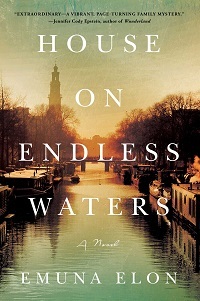 Yoel Blum, a prominent Israeli writer, had promised his mother that he’d never visit Amsterdam, the city where he was born. But she has passed on, and when his agent persuades him to attend a literary event there at his Dutch publisher’s invitation, he feels obliged to accept. Yoel knows little about the circumstances of his birth, other than that his mother left the Netherlands with him and his older sister, Nettie, during WWII, never speaking of the place where she lost her husband and other relatives.
Yoel Blum, a prominent Israeli writer, had promised his mother that he’d never visit Amsterdam, the city where he was born. But she has passed on, and when his agent persuades him to attend a literary event there at his Dutch publisher’s invitation, he feels obliged to accept. Yoel knows little about the circumstances of his birth, other than that his mother left the Netherlands with him and his older sister, Nettie, during WWII, never speaking of the place where she lost her husband and other relatives. While there, Yoel and his wife, Bat-Ami, pay a visit to the Jewish Historical Museum and, in a film clip from a long-ago wedding, catch a glimpse of his mother as a young woman with her husband and daughter, and holding an unfamiliar male infant. This spurs Yoel to visit Nettie back in Israel to find out who the baby was. The startling story Nettie tells him inspires him to return to Amsterdam alone, several days later, on a journey to research and craft a very personal novel he feels will be his most significant work.
Elon chooses to withhold the full details of Nettie’s revelations, a decision that feels frustrating initially for a character-centered literary novel, since it creates even more distance between readers and the protagonist. Yoel, we learn, has closed himself off emotionally throughout his life, even from his wife, children, and grandchildren. But what the author does instead is use a technique, I decided later, that proves to be much more original.
While perambulating around Amsterdam and observing venues central to his family story, Yoel hand-writes scenes for his novel in a series of notebooks. These imagined scenes follow his young mother, Sonia, who he now feels he never really knew; her physician husband, Eddy; and their two young children, who live in a basement apartment owned by a wealthy couple, the de Langes, as increasing restrictions are imposed upon Amsterdam’s Jewish residents. Both families believe they’ll be immune from the dreadful events happening to Jews elsewhere.
Yoel’s thoughts and experiences are closely intercut with episodes from his manuscript, which increases the pacing of this ruminative work and creates continual interactions between today and the past, often multiple times in the same chapter. This enhances Elon’s themes about the long-term effects of trauma, the suffering and persecution carved into Jewish collective memory, and mothers’ desperate instincts to protect their children. For me, one aspect of the mystery in Yoel’s past was never in doubt from one point forward, but the images of wartime Amsterdam are beautifully evoked and heart-rending.
House on Endless Waters, translated from Hebrew by Anthony Berris and Linda Yichiel, will be published by Atria/S&S on January 7th; thanks to the publisher for sending the review copy.
Published on January 01, 2020 06:20
December 28, 2019
Libraries and librarians take center stage in these works of historical fiction
Fellow librarians: the time for seeing our professional roles and collections depicted in historical fiction has arrived. We've emerged from beyond the mousy stereotype and have even become trendy. The titles in the following collage have clear appeal for all bibliophiles, not just those who work with books for a living. Some were recently published, while you'll find the others appearing next year. Links go to their Goodreads pages.
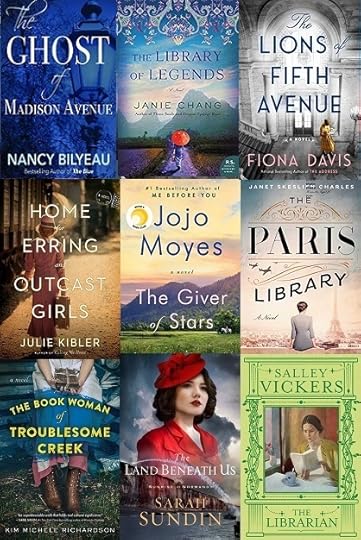
Nancy Bilyeau's Christmas ghost story The Ghost of Madison Avenue (Amazon, 2019), a novella taking place in 1912 Manhattan, has the memorable setting of financier J. P. Morgan's opulent private library. The title of Janie Chang's The Library of Legends (William Morrow, May 2020) refers to a precious and rare centuries-old collection of myths and legends being transported across China by a group of brave university students as they flee Nanking during their country's war with Japan. Marble lions flank the entrance of the New York Public Library, the setting for Fiona Davis's The Lions of Fifth Avenue (Dutton, July 2020), a dual-period novel of two women, eighty years apart, whose lives center around the landmark building, and who are both puzzled by mysterious book thefts.
In her multi-period novel Home for Erring and Outcast Girls (Crown, 2019), Julie Kibler, a librarian herself, focuses on a contemporary university librarian investigating the histories of two residents of a progressive home for fallen women in Texas a century earlier. Moyes' The Giver of Stars (Viking, 2019), set in a rural Kentucky mountain town, emphasizes female friendship in its depiction of the region's Depression-era Pack Horse Librarians. The importance of literature and literacy also emerges in The Paris Library by Janet Skeslien Charles (Atria, June 2020), which heads to WWII-era Paris to acknowledge the valiant workers at the American Library of Paris, which remained open and supplying books during the Nazi occupation.
Richardson's The Book Woman of Troublesome Creek (Sourcebooks, 2019) centers themes of literacy and prejudice in the story of a young Appalachian woman, one of Kentucky's "blue people," who delivers books to mountain residents in the Depression years. Sarah Sundin, a prolific chronicler of WWII-era settings in her inspirational romances, has a librarian heroine for her moving, hopeful The Land Beneath Us (Revell, Feb. 2020), set at Camp Forrest, Tennessee, and overseas. Salley Vickers' The Librarian (Viking UK, 2018), described as "charmingly subversive" by the publisher, follows a young children's librarian in a small town in 1950s England which has its fill of gossip and secrets.
In addition, Publishers Marketplace includes a recent deal for Marie Benedict and Victoria Christopher Murray's The Personal Librarian, about Belle da Costa Greene, a woman of color who became J. P. Morgan's librarian in 1905; the novel will appear from Berkley in 2021. Greene also plays a prominent role in Nancy Bilyeau's novella, above.

Nancy Bilyeau's Christmas ghost story The Ghost of Madison Avenue (Amazon, 2019), a novella taking place in 1912 Manhattan, has the memorable setting of financier J. P. Morgan's opulent private library. The title of Janie Chang's The Library of Legends (William Morrow, May 2020) refers to a precious and rare centuries-old collection of myths and legends being transported across China by a group of brave university students as they flee Nanking during their country's war with Japan. Marble lions flank the entrance of the New York Public Library, the setting for Fiona Davis's The Lions of Fifth Avenue (Dutton, July 2020), a dual-period novel of two women, eighty years apart, whose lives center around the landmark building, and who are both puzzled by mysterious book thefts.
In her multi-period novel Home for Erring and Outcast Girls (Crown, 2019), Julie Kibler, a librarian herself, focuses on a contemporary university librarian investigating the histories of two residents of a progressive home for fallen women in Texas a century earlier. Moyes' The Giver of Stars (Viking, 2019), set in a rural Kentucky mountain town, emphasizes female friendship in its depiction of the region's Depression-era Pack Horse Librarians. The importance of literature and literacy also emerges in The Paris Library by Janet Skeslien Charles (Atria, June 2020), which heads to WWII-era Paris to acknowledge the valiant workers at the American Library of Paris, which remained open and supplying books during the Nazi occupation.
Richardson's The Book Woman of Troublesome Creek (Sourcebooks, 2019) centers themes of literacy and prejudice in the story of a young Appalachian woman, one of Kentucky's "blue people," who delivers books to mountain residents in the Depression years. Sarah Sundin, a prolific chronicler of WWII-era settings in her inspirational romances, has a librarian heroine for her moving, hopeful The Land Beneath Us (Revell, Feb. 2020), set at Camp Forrest, Tennessee, and overseas. Salley Vickers' The Librarian (Viking UK, 2018), described as "charmingly subversive" by the publisher, follows a young children's librarian in a small town in 1950s England which has its fill of gossip and secrets.
In addition, Publishers Marketplace includes a recent deal for Marie Benedict and Victoria Christopher Murray's The Personal Librarian, about Belle da Costa Greene, a woman of color who became J. P. Morgan's librarian in 1905; the novel will appear from Berkley in 2021. Greene also plays a prominent role in Nancy Bilyeau's novella, above.
Published on December 28, 2019 05:00
December 23, 2019
The Oracle of Cumae by Melissa Hardy, a humorous romp through Italian history and folklore
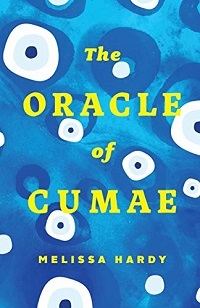 In the central Italian city of Casteldurante in the late 19th century, a 99-year-old woman, Mariuccia Umbellino, summons a priest so she can unburden herself of a long-held secret. What she reveals isn’t your standard multi-generational saga fare; instead, Hardy’s short novel is a tongue-in-cheek romp through Italian folklore, mythology, and religious tradition.
In the central Italian city of Casteldurante in the late 19th century, a 99-year-old woman, Mariuccia Umbellino, summons a priest so she can unburden herself of a long-held secret. What she reveals isn’t your standard multi-generational saga fare; instead, Hardy’s short novel is a tongue-in-cheek romp through Italian folklore, mythology, and religious tradition.The tale Mariuccia unfolds takes her back to her youth in the tiny village of Montemonaco, where her family tended olive groves and goats and guarded the shrine of the Lady Sibylla, the Oracle of Cumae.
Sibylla is the self-same prophetess from Virgil and Ovid. As Mariuccia and her mother discover, when they arrive to rescue her before a traveling priest and stuffy prior destroy the pagan cave where she lives, there’s nothing left of Sibylla but her voice – and she’s quite the talker. As if her presence doesn’t cause enough trouble – she gets to move around while tucked away in a jug – she stirs up plenty on her own. What happens next involves love spells (both failed and successful), ghosts, a marriage or two, and a tinker with the evil eye.
If the plot feels a little thin in places, Sibylla has some terrific wisecracking lines (she hates to be left out of the action). The novel’s a fun diversion on historical fiction’s lighter side, featuring two smart heroines who won’t be silenced.
Melissa Hardy's The Oracle of Cumae was published by Canada's Second Story Press in 2019, and I reviewed it from NetGalley for the Historical Novels Review.
Published on December 23, 2019 08:39
December 17, 2019
The Giver of Stars by Jojo Moyes, a novel about books, dedication, and female friendship during the Depression years
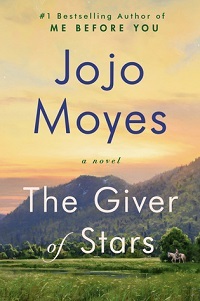 Books provide people with education and entertainment; they change lives as they introduce different worlds and unfamiliar experiences. During the Depression, the women who transported books in their horses’ saddlebags to isolated Kentucky mountain residents, in all seasons, as part of the WPA’s Pack Horse Library Initiative provided a lifeline of literacy to their audiences.
Books provide people with education and entertainment; they change lives as they introduce different worlds and unfamiliar experiences. During the Depression, the women who transported books in their horses’ saddlebags to isolated Kentucky mountain residents, in all seasons, as part of the WPA’s Pack Horse Library Initiative provided a lifeline of literacy to their audiences. Hearing about this unique job after a dull church service, Alice Van Cleve grows intrigued and immediately volunteers to join. After getting swept off her feet by Bennett Van Cleve, a burly, handsome Kentuckian visiting her native England, Alice feels stifled by the insularity in her new home of Baileyville, a small Appalachian town, and surprised by her new husband’s unexpected aloofness. Alice had never fit in at home, and with her clipped British accent and dislike for frivolous social pursuits, she’s an outsider in Kentucky, too.
She finds an unofficial new family with the four other pack-horse librarians, including fiery Margery O’Hare, who lives life as she pleases, and Izzy Bailey, a polio survivor with an overprotective mother. All the women face obstacles, not just the harsh elements on the trail, but also Alice’s controlling father-in-law, and townspeople threatened by the ideas the books contain.
Moyes strikes the right balance between the heartwarming details of the women’s friendship and the realistic threats they face. The mountainous landscape comes through beautifully as the women traverse rivers, ride their horses up through rocky forests and down into the hollers, and gaze up at the crystalline night sky. They have distinctive personalities, yet it’s easy to identify with all of them.
Anyone who has read Moyes knows her skill at writing moving, complex love stories, too. While one character is stereotypically evil, the novel is a fine tribute to the devoted, hardy librarians who served as knowledge ambassadors for their region.
The Giver of Stars was published by Pamela Dorman Books in the US and Canada, and Michael Joseph in the UK. I reviewed it initially for November's Historical Novels Review.
Published on December 17, 2019 16:38
December 12, 2019
Looking for a historical novel set in Paris around the WWII years?
If so, you have plenty to choose from. Most are set during the war, with some extending to just before or after. These covers have a noticeable element in common, too.
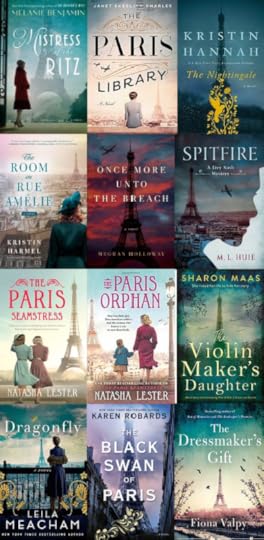

Published on December 12, 2019 04:00
December 9, 2019
The Land Beyond the Sea, Sharon Kay Penman's forthcoming epic of 12th-century Jerusalem and the Crusader states
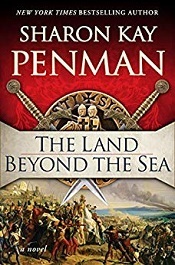 Penman is justifiably renowned for her medieval epics. Working on a large canvas, she illustrates the era’s political movements and the personalities of its movers and shakers with equal dexterity. In this standalone work, she focuses on the twelfth-century Christian Kingdom of Jerusalem, ruled by relatives of England’s Plantagenets (her previous subjects).
Penman is justifiably renowned for her medieval epics. Working on a large canvas, she illustrates the era’s political movements and the personalities of its movers and shakers with equal dexterity. In this standalone work, she focuses on the twelfth-century Christian Kingdom of Jerusalem, ruled by relatives of England’s Plantagenets (her previous subjects).Among many well-crafted characters, several quickly stand out, including Baldwin IV, the gifted boy monarch tragically stricken by leprosy; his stepmother, Maria Comnena, a courageous Greek princess scorned by her late husband’s first, discarded wife; and honorable nobleman Balian d’Ibelin.
As the Crusader states of Outremer (“the land beyond the sea”) defend their lands against Muslim military forces, which are led by the charismatic sultan Saladin, they struggle with internal strife. The royal succession is of pressing concern, since Baldwin can’t marry and expects to die young. The Muslims’ viewpoints are also relayed firsthand.
From fierce battle maneuvers to the emotional corridors of an unexpected love story, readers will feel intimately drawn into the characters’ dramatic lives in Penman’s splendid historical novel.
The Land Beyond the Sea will be published by Putnam in March 2020; I wrote this early review for Booklist's 12/1 issue. Reviewing this 688-page novel in 175 words or fewer was a particular challenge...
Penman's previous two historical novels, Lionheart (2011) and A King's Ransom (2014), which focused on Richard I of England, take place after The Land Beyond the Sea and feature some of the same characters once Richard heads to the Holy Land on the Third Crusade. The cast of this latest book, and the historical events depicted within, will be less familiar to most readers.
Regarding the relationship of Baldwin IV to the Plantagenet kings of England, he was the cousin of Henry II, who ruled England at the time (and whose consort was Eleanor of Aquitaine). Baldwin's father, King Amalric of Jerusalem, and Henry's father, Geoffrey of Anjou, were half-brothers. Amalric appears in a few early scenes in this book. Going back even further in Jerusalem's medieval history, Amalric's mother, Melisende, was a reigning queen of Jerusalem and a fascinating historical figure. Her story was retold in fiction by Judith Tarr in Queen of Swords (2000). I'd first encountered Baldwin IV in fiction in two of Tarr's historical fantasy novels, Alamut and The Dagger and the Cross and later in Cecelia Holland's Jerusalem . You may also remember Balian of Ibelin from the film Kingdom of Heaven. In all, for historical fiction readers in search of novels on the subject to whet your appetite for the period before Penman's novel makes its appearance, there are these to choose from, among others.
Published on December 09, 2019 05:00
December 2, 2019
Nina MacLaughlin's Wake, Siren: Ovid's Metamorphoses for the #MeToo era
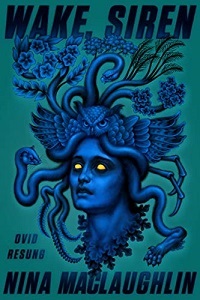 “The act of art is metamorphosis,” pronounces one woman in this eclectic collection, in which MacLaughlin daringly fashions a new artistic work that transforms female characters from Ovid’s Metamorphoses into the heroes (or anti-heroes) of their own stories.
“The act of art is metamorphosis,” pronounces one woman in this eclectic collection, in which MacLaughlin daringly fashions a new artistic work that transforms female characters from Ovid’s Metamorphoses into the heroes (or anti-heroes) of their own stories.While they take a feminist slant, similar to that in Madeline Miller’s Circe (2018), the 34 accounts in this multi-voiced mosaic, which range from a couple of pages to much longer, creatively diverge in approach and style. Some stories dazzle with their poetic eloquence, while others, written in slangy contemporary English, offer short, punchy lines and timeless themes.
Baucis, an elderly woman, tells a moving tale of enduring love and the gods’ power and gratitude, while a therapy-session dialogue ideally suits Myrrha’s disturbing story of her son’s conception. Medusa reveals the true tragedy of her plight, and in “Sibyl,” MacLaughlin converts the traditional tale into a paean to older women’s wisdom.
Many women in Ovid’s poems suffer unwanted male attention or sexual violence and find themselves silenced after being changed into animals, trees, or something else, but here they express their sorrow, fear, and rage. The free mingling of ancient characters with elements of workaday modern life won’t please everyone, but open-minded readers should applaud the virtuosity and find much worth discovering in these memorable reinterpretations.
Nina MacLaughlin's Wake, Siren: Ovid Resung was published by FSG on November 19th. I wrote this review for Booklist's October 1st issue, and it's the latest in a growing string of re-interpreted myths that I've been assigned to cover for that publication, including Miller's Circe as mentioned above, Maria Dahvana Headley's The Mere Wife (which re-imagines Beowulf in the suburbs; stunningly good, but not historical fiction), Kamila Shamsie's award-winning Home Fire (also excellent, but not HF). With its mix of mythical and modern settings, whether you'd call Wake, Siren historical fiction is also up for debate as well, but it's worth reading, even if you don't think you're interested in shorter pieces.
Published on December 02, 2019 16:19
November 27, 2019
Fortune's Child by James Conroyd Martin, entertaining fiction about Empress Theodora
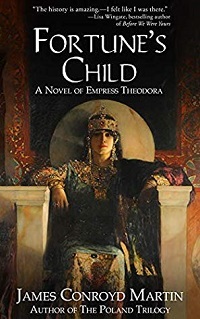 In his solidly entertaining sixth novel, the lives of Martin’s two intelligent, resilient protagonists are marked by dramatic shifts in circumstance.
In his solidly entertaining sixth novel, the lives of Martin’s two intelligent, resilient protagonists are marked by dramatic shifts in circumstance. The tale of Theodora, the beautiful dark-haired middle daughter of a bearkeeper, begins in the shadow of Constantinople’s Hippodrome arena, plays out on various stages as an actress, and concludes atop a throne, following her improbable rise to become empress of the eastern Roman Empire as consort to Justinian I. Dying of cancer at 47, she liberates her old friend, a eunuch and former royal scribe named Stephen, from his grisly dungeon prison – where he’s languished for five years for reasons he doesn’t know – and asks him to write her biography.
Unlike Theodora, Stephen has had few opportunities for agency, but as his tale unfolds in parallel to hers, it wields a similar pull. A Syrian boy sold to a Persian magus and trained in multiple languages, he finds his life violently altered as a teenager. Aboard a ship leaving Antioch, he meets Theodora, who becomes his unattainable Circe.
The raw material fueling this novel is consistently fascinating. It offers a mixture of familiar human traits and exotic customs, with mythological “living pictures” all the rage in theatres and holy men, called stylites, living atop marble pillars. Likewise, the settings are vibrantly evoked as Theodora journeys through the vast, diverse lands of what we now call the Byzantine Empire in the sixth century, from the fertile landscapes of the Libyan Pentapolis to the pleasure-seeking venues of Antioch and a dark cell in Alexandria, where she encounters the Monophysite heresy for the first time. The theological details are cogently explained.
The energetically paced plot has prevalent themes of ambition and friendship. Unlike many strong-minded historical fiction heroines, Theodora forms bonds of sisterhood with other women, and they help each other navigate a world that doesn’t favor them. Along the way she makes some major mistakes and learns from them. Justinian, her future husband, shows up fairly late on the scene, and his personality remains somewhat enigmatic. This is just the first half of Theodora’s story, however, and history tells us that there’s plenty more to look forward to in book two.
Fortune's Child was published in October by Hussar Quill Press.
Published on November 27, 2019 06:23
November 21, 2019
Review of Entertaining Mr. Pepys by Deborah Swift, set in 17th-century London
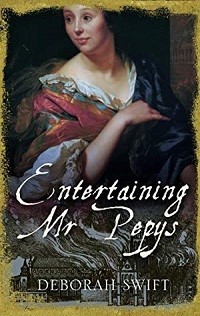 Deborah Swift has established a literary home in the 17th century, and her expertise shows in her work; she has a gift for illuminating the characters, customs, politics, and religion of the time. Her newest trilogy looks at the real-life women who figured in Samuel Pepys’ famous diary. Entertaining Mr. Pepys, the third volume, can also stand alone (I haven’t read the others yet and have some catching up to do). With such a title, and with a professional actress as its heroine, you’d expect it to be lively and entertaining, and it is.
Deborah Swift has established a literary home in the 17th century, and her expertise shows in her work; she has a gift for illuminating the characters, customs, politics, and religion of the time. Her newest trilogy looks at the real-life women who figured in Samuel Pepys’ famous diary. Entertaining Mr. Pepys, the third volume, can also stand alone (I haven’t read the others yet and have some catching up to do). With such a title, and with a professional actress as its heroine, you’d expect it to be lively and entertaining, and it is. Mary Elizabeth “Bird” Carpenter comes from a well-to-do London household. Her troubles begin after her widowed father grows besotted with and marries a younger woman who wants Bird out of her home. Bird is hardly thrilled to marry horse-dealer Christopher Knepp, who she barely knows, and even less so when she arrives at Knepp’s home as a bride and discovers she was essentially purchased to be his servant and brood-mare. Knepp, driven by his jealousy of a neighbor and business rival, is a skinflint who spends nearly all his meager income on horses, and Bird spends many exhausting days—and then years—washing saddles, preparing meals for Knepp’s workers, and fighting to create a well-furnished household amid the grime and neglect.
Bird has always had a beautiful singing voice, and through her friendship with Livvy, Knepp’s black serving-maid, she gets introduced to the London stage: first as an observer, then as a performer. When she sees a possible way out of her life of drudgery, she grabs it with both hands. Knepp is reluctant to let his wife tread the boards, but the enterprising Bird sees a way to present it to him as a business opportunity. Through the stage, Bird finds a new admirer in avid theatre-goer Samuel Pepys.
I especially enjoyed Swift’s depiction of working-class life and people in 1660s London. Her diverse cast of characters includes Bird’s needy, frail mother-in-law; several Catholics forced to hide their beliefs; Livvy and her family, forced to live apart; and Stefan, a young actor who adored playing female roles and is devastated by the new trend to hire actresses, rather than men, to play women on stage. Neither he nor Knepp is kind to Bird, but Swift also gives us enough glimpses of their struggles so that their attitudes are understandable, even if it’s difficult to like them. Swift also presents a convincing, panoramic view of the chaos and devastation wrought by the Great Fire of 1666:
Further up, shouts, as families flung their goods into the river. From this distance, the wharf teemed with running silhouettes against the brilliant light of the flames… the landscape of London was like a mouth with missing teeth, full of blackened stumps and gaps. The view was alien, unrecognizable. Half-burned joists and rafters stuck out from church steeples; in the distance something exploded.
Though the plot dips into others’ viewpoints now and again, it’s anchored by the delightful and determined Bird, and it’s a pleasure to follow along with her unexpectedly successful career path in 17th-century London.
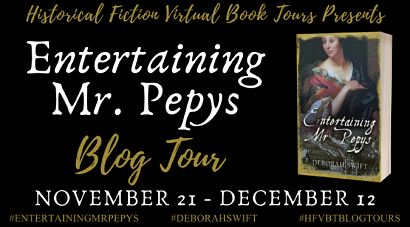
Entertaining Mr. Pepys is published by Accent Press this week, and this is day 1 of the author's blog tour with Historical Fiction Virtual Book Tours. There's a tour-wide giveaway, too:
During the Blog Tour, we are giving away a signed copy of Entertaining Mr. Pepys! To enter, please use the Gleam form below.
Giveaway Rules
– Giveaway ends at 11:59 pm EST on December 12th. You must be 18 or older to enter.
– Paperback giveaway is open internationally.
– Only one entry per household.
– All giveaway entrants agree to be honest and not cheat the systems; any suspicion of fraud will be decided upon by blog/site owner and the sponsor, and entrants may be disqualified at our discretion.
– The winner has 48 hours to claim prize or a new winner is chosen.
Entertaining Mr. Pepys
Published on November 21, 2019 04:00
November 15, 2019
Love Without End by Melvyn Bragg, a multi-period novel exploring Heloise and Abelard's 12th-century love story - plus giveaway
 The love story of the brilliant scholar Heloise and her tutor, the celebrity philosopher Peter Abelard, is remembered for its passion, tragedy, and sacrifice. Today, though, some aspects of their relationship can seem inexplicable. Why, for example, did their marriage have to be secret, and why did both feel obliged to take religious vows?
The love story of the brilliant scholar Heloise and her tutor, the celebrity philosopher Peter Abelard, is remembered for its passion, tragedy, and sacrifice. Today, though, some aspects of their relationship can seem inexplicable. Why, for example, did their marriage have to be secret, and why did both feel obliged to take religious vows?In his psychologically penetrating and touching novel, Bragg addresses these questions, and others, by placing the lovers into their socioreligious context of twelfth-century France and by weaving in a modern thread. While composing a novel about the medieval couple, a historian named Arthur explains his writing choices to his twentysomething daughter, Julia, while leading up to a big reveal about why he left her mother.
Neither present-day character is fully fleshed out; they mainly exist to provide a running commentary on Abelard and Heloise’s decisions. However, the historical portions, steeped in the philosophies of the age, take readers deep into the characters’ minds as the pair fall in love, endure Heloise’s uncle’s wrath and betrayal, and live separate yet emotionally connected lives thereafter.
Love Without End is published by Arcade this month in the US (it was previously published in the UK by Sceptre). I wrote this review for Booklist's 10/15/19 issue and subsequently received a hardcover copy of the book in the mail. Interested in reading it for yourself? Please fill out the form below to enter the giveaway. One response per household, please; void where prohibited. Deadline Friday, November 22nd. Good luck!
Loading…
Published on November 15, 2019 07:45



